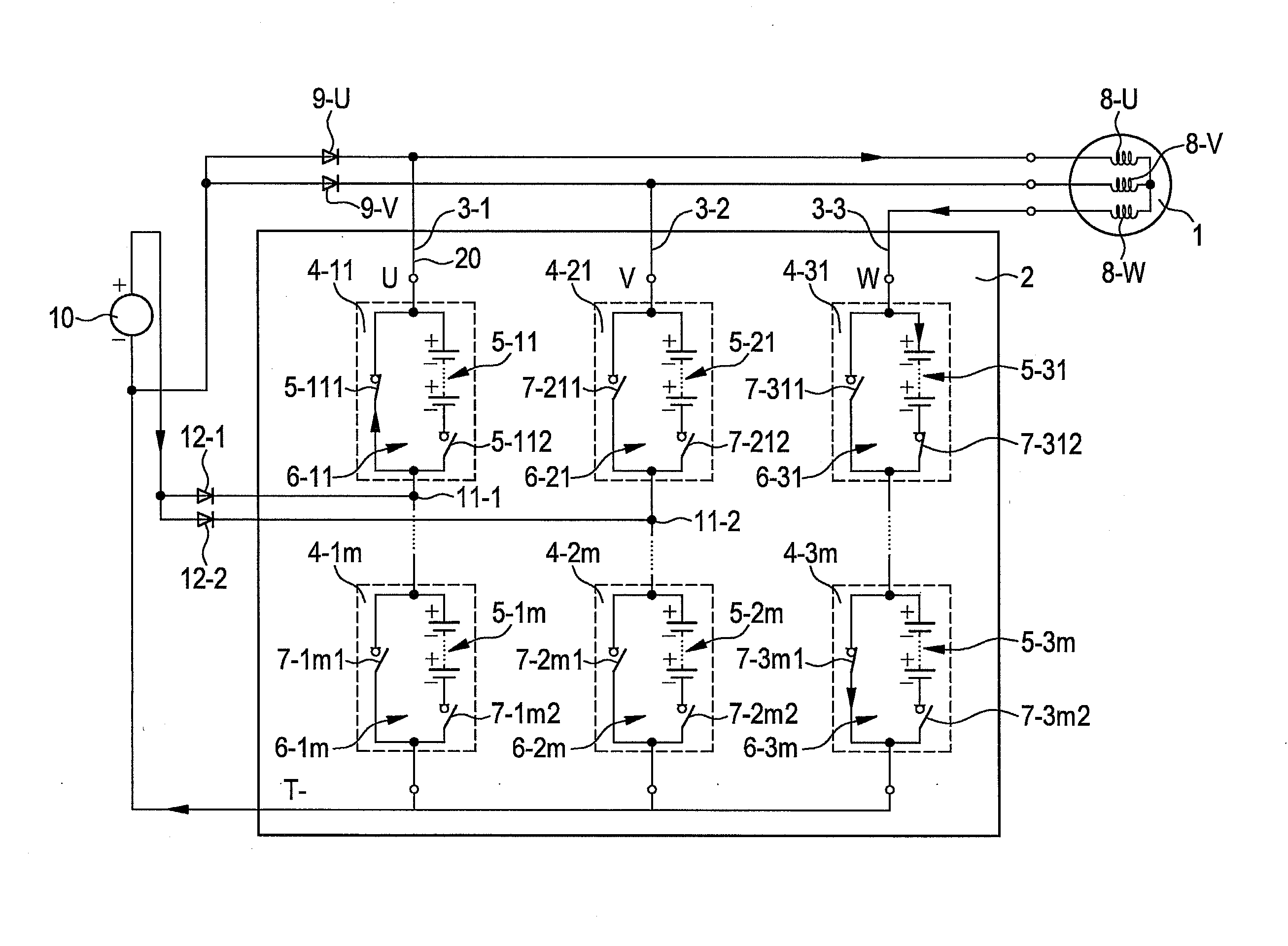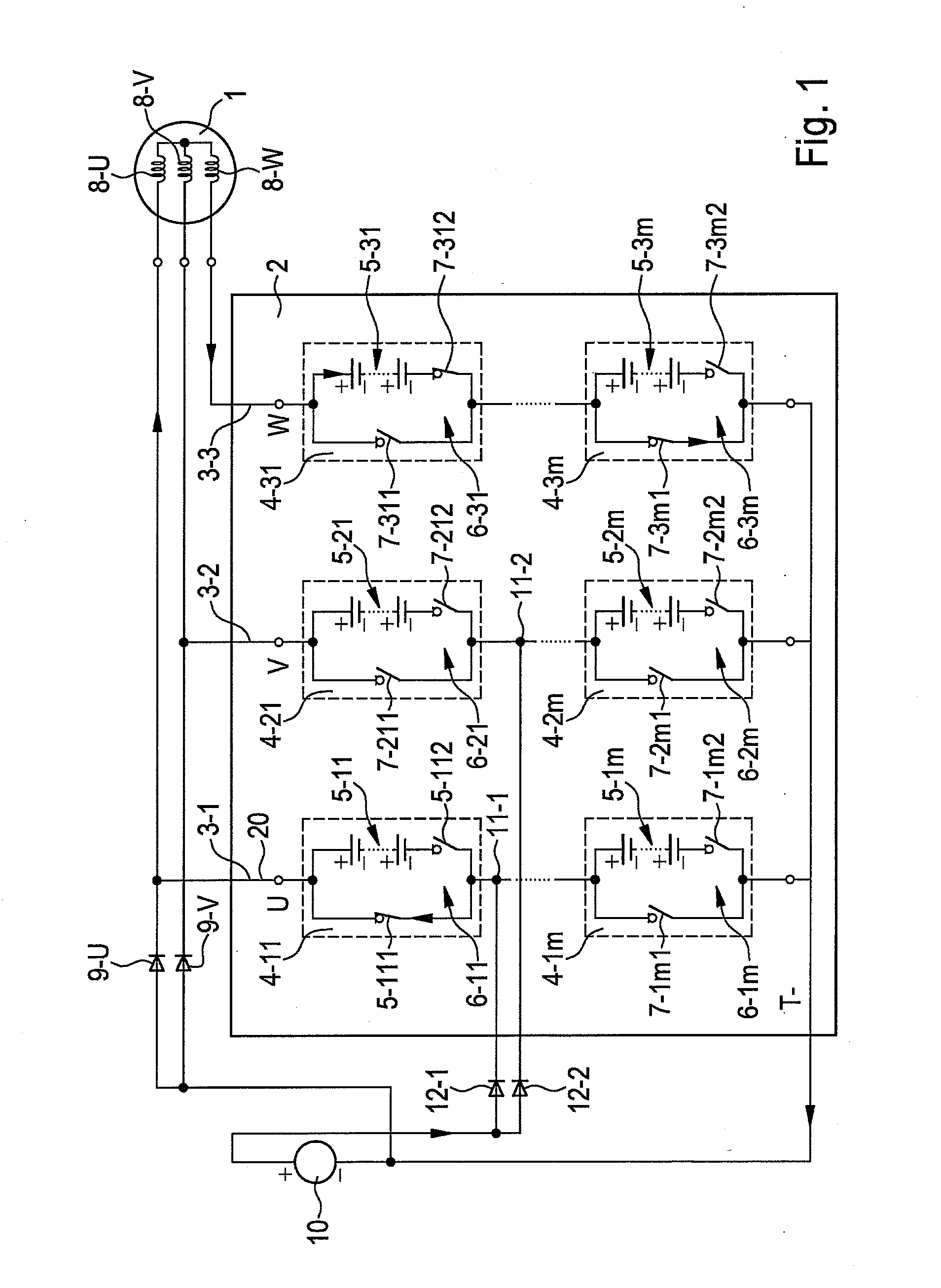System for Charging an Energy Store, and Method for Operating the Charging System
a technology for charging energy and energy storage, applied in the direction of battery/fuel cell control arrangement, electric devices, battery/cell propulsion, etc., can solve the problems of failure of the energy reservoir, and failure of the entire system, so as to avoid the possibility of undesired torque during the charging operation and reduce the on-state resistance value
- Summary
- Abstract
- Description
- Claims
- Application Information
AI Technical Summary
Benefits of technology
Problems solved by technology
Method used
Image
Examples
Embodiment Construction
[0018]FIGS. 1 and 2 schematically depict a charging system according to the present invention. A controllable energy reservoir 2 is connected to a three-phase electrical machine 1. Controllable energy reservoir 2 encompasses three energy supply branches 3-1, 3-2, and 3-3, which are connected on the one hand to a reference potential T− (reference bus) that, in the embodiment depicted, carries a low potential, and on the other hand respectively to individual phases U, V, W of electrical machine 1. Each of energy supply branches 3-1, 3-2, and 3-3 has, connected in series, m energy reservoir modules 4-11 to 4-1m, 4-21 to 4-2m, and 4-31 to 4-3m respectively, where m≧2. Energy reservoir modules 4 in turn each encompass multiple respective electrical energy reservoir cells 5-11 to 5-1m, 5-21 to 5-2m, 5-31 to 5-3m connected in series. Energy reservoir modules 4 furthermore each encompass a respective coupling unit 6-11 to 6-1m, 6-21 to 6-2m, 6-31 to 6-3m that is associated with energy reser...
PUM
 Login to View More
Login to View More Abstract
Description
Claims
Application Information
 Login to View More
Login to View More - R&D
- Intellectual Property
- Life Sciences
- Materials
- Tech Scout
- Unparalleled Data Quality
- Higher Quality Content
- 60% Fewer Hallucinations
Browse by: Latest US Patents, China's latest patents, Technical Efficacy Thesaurus, Application Domain, Technology Topic, Popular Technical Reports.
© 2025 PatSnap. All rights reserved.Legal|Privacy policy|Modern Slavery Act Transparency Statement|Sitemap|About US| Contact US: help@patsnap.com



